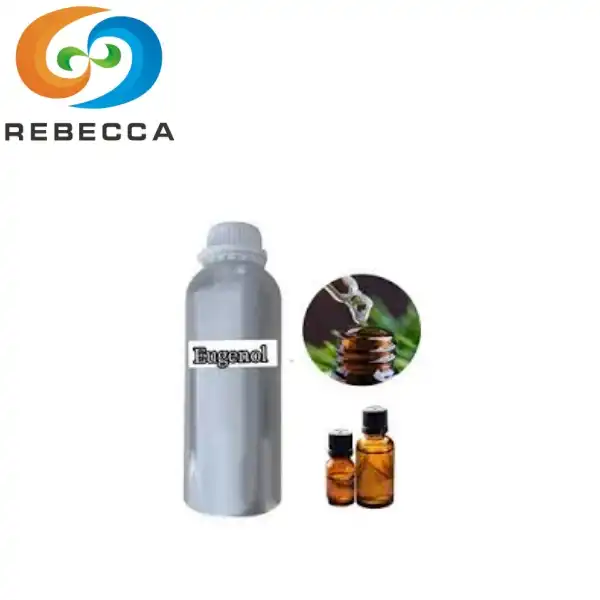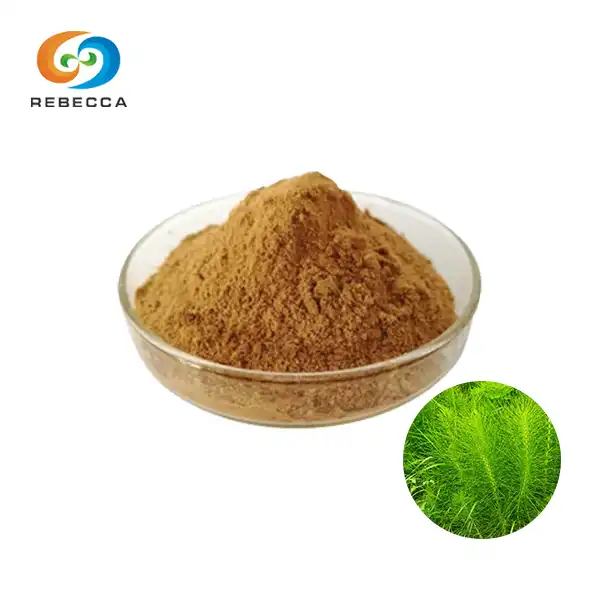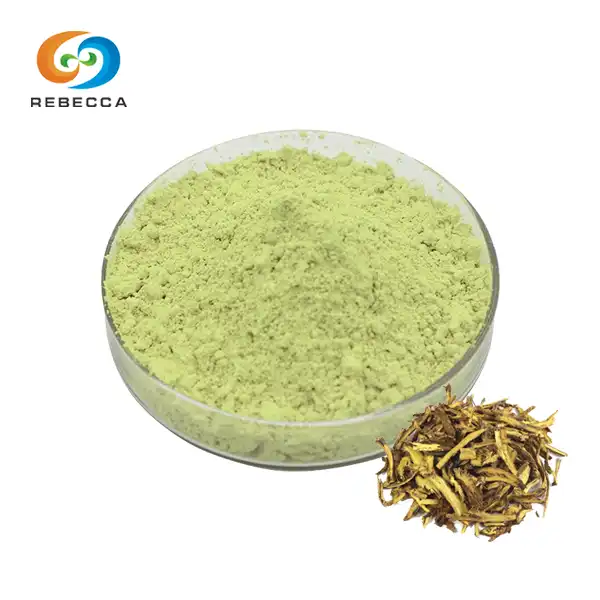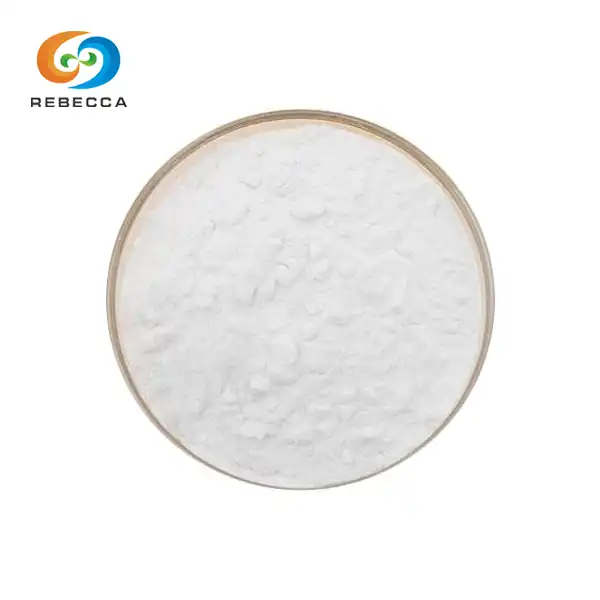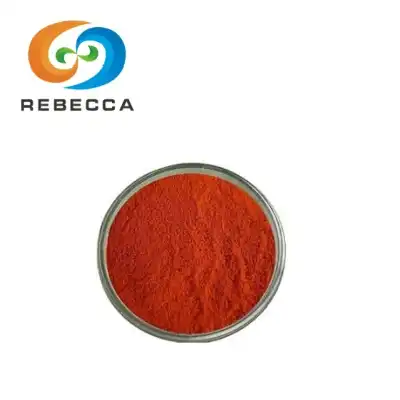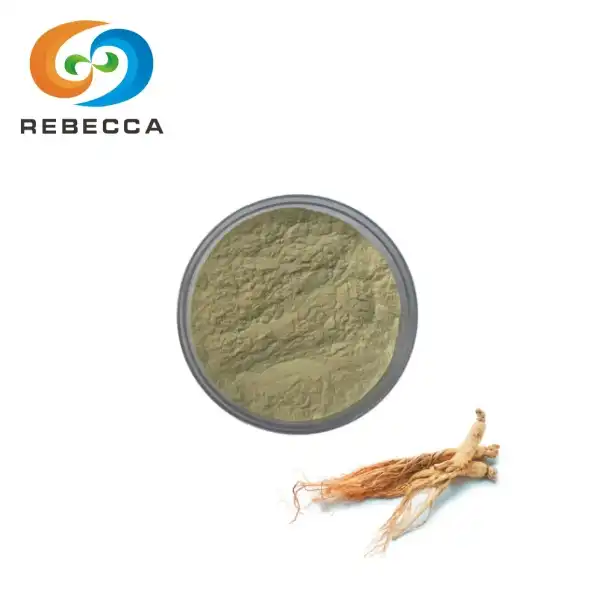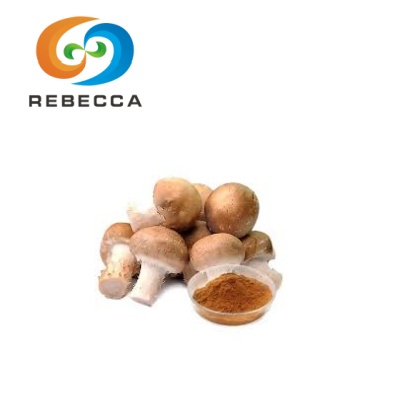Berberine Phytosome VS Berberine HCL
In the realm of natural supplements, berberine has gained significant attention for its potential health benefits. When comparing Berberine Phytosome and Berberine HCL, it's crucial to understand their distinct characteristics. The latter, the hydrochloride salt form, has been the traditional choice for supplementation. However, the former, a more advanced formulation, aims to enhance absorption and bioavailability. This article examines the differences between these two forms, delving into their absorption mechanisms, efficacy, and overall value for both health-conscious consumers and industry professionals
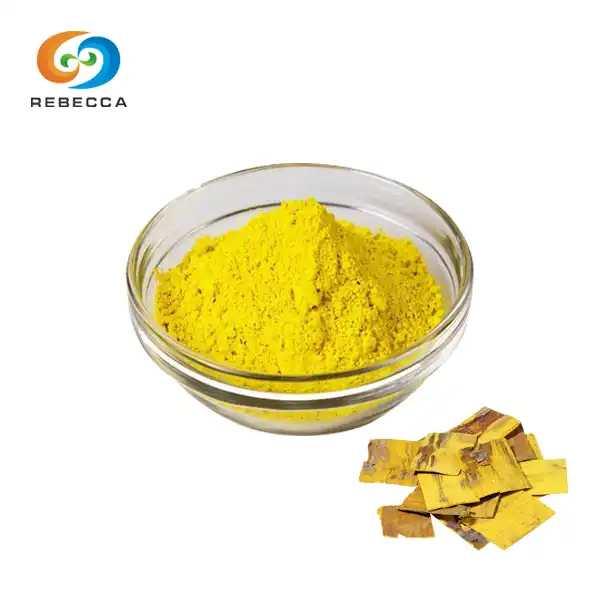
【English name】: Berberine HCL
【Latin Name】: Cortex Phellodendri Chinensis.
【CAS No.】: 633-65-8
【Molecular Formula】: C20H18ClNO4
【active ingredients】: Berberine,phellodendrine,magnoflorine, jatrorrhizine,palmatine etc.
【Specification】: 97%
【Use Part】 : Bark
【Appearance】: Yellow crystalline powder
【Mesh size】:80 Mesh
【Test Method】: HPLC,Titration Test
Bioavailability Battle: Phytosome vs HCL
Berberine's Absorption Mechanisms
Berberine, a powerful plant alkaloid, faces challenges when it comes to absorption in the human body. Its molecular structure, while beneficial for various physiological processes, can hinder its passage through the intestinal wall. This limitation has led researchers to explore innovative delivery methods to maximize berberine's potential.
The absorption of berberine relies on specific transporters in the gut. These transporters, however, can become saturated, limiting the amount of berberine that enters the bloodstream. This saturation effect is particularly relevant when considering the traditional Berberine HCL form, which relies solely on these natural transport mechanisms.
Phytosome Technology: Enhancing Berberine Uptake
Phytosome technology represents a significant advancement in herbal supplement delivery. This innovative approach involves binding berberine molecules to phospholipids, creating a complex that mimics the structure of cell membranes. The result is a more lipid-friendly compound that can easily merge with and pass through the intestinal lining.
By utilizing this phospholipid "envelope," Berberine Phytosome potentially bypasses the limitations of traditional absorption pathways. This enhanced absorption mechanism may lead to higher concentrations of berberine in the bloodstream, potentially amplifying its beneficial effects on blood sugar regulation and metabolic health.
HCL Form: Traditional Berberine Delivery
Berberine HCL, the hydrochloride salt form, has been the standard in berberine supplementation for years. This form offers a stable and easily manufactured product, making it a cost-effective option for both manufacturers and consumers. The HCL form dissolves readily in the acidic environment of the stomach, releasing berberine for absorption in the small intestine.
While berberine HCl has demonstrated efficacy in numerous studies, its absorption rate is limited by the body's natural transport mechanisms. This limitation can result in a lower overall bioavailability compared to more advanced formulations like the phytosome complex.
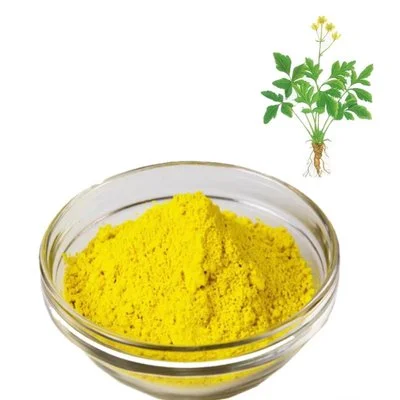
Absorption Rates: Which Form Excels?
Comparing Phytosome and HCL Absorption Kinetics
The absorption kinetics of Berberine Phytosome and Berberine HCL differ significantly due to their distinct molecular structures and delivery mechanisms. Phytosome technology allows for a more gradual and sustained release of berberine into the bloodstream. This controlled release may result in a more stable concentration of berberine over time, potentially enhancing its therapeutic effects.
In contrast, Berberine HCL typically exhibits a rapid initial absorption followed by a quicker decline in blood concentration. This pattern may necessitate more frequent dosing to maintain effective levels of berberine in the body. The difference in absorption kinetics between these two forms can have significant implications for dosing strategies and overall efficacy.
Bioavailability Studies: Phytosome vs HCL Results
Recent studies comparing the bioavailability of Berberine Phytosome and Berberine HCL have yielded promising results for the phytosome formulation. Research indicates that the phytosome complex can achieve higher peak plasma concentrations and a greater area under the curve (AUC) compared to traditional HCL forms. These findings suggest that a lower dose of Berberine Phytosome may be required to achieve the same physiological effects as a higher dose of Berberine HCL.
However, it's important to note that individual responses to these formulations can vary. Factors such as gut health, diet, and concurrent medications can influence the absorption and efficacy of both forms of berberine. As such, personalized approaches to supplementation may be necessary to optimize results.
Factors Influencing Berberine Absorption Rates
Several factors can impact the absorption rates of both Berberine Phytosome and Berberine HCl. The presence of food in the digestive tract, for instance, can affect the dissolution and absorption of these supplements. Some studies suggest that taking berberine with a meal may enhance its absorption, particularly for the HCL form.
Additionally, the health of the gut microbiome plays a crucial role in berberine metabolism and absorption. A balanced and diverse gut flora may contribute to more efficient uptake of berberine, regardless of its form. This underscores the importance of considering overall digestive health when implementing berberine supplementation strategies.
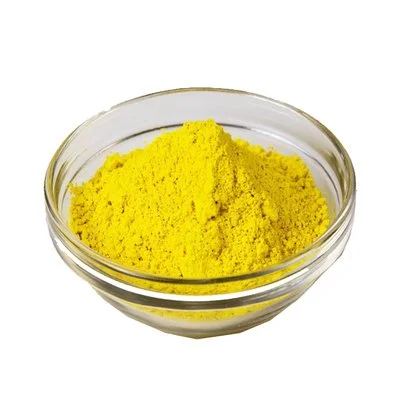
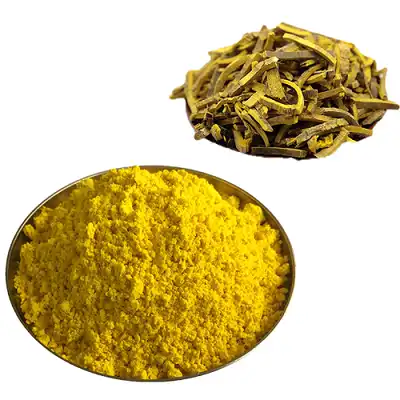
Choosing the Right Berberine: Phytosome or HCL?
Health Benefits: Phytosome vs HCL Efficacy
Both Berberine Phytosome and Berberine HCL have demonstrated potential health benefits, particularly in the areas of blood sugar regulation and cardiovascular health. The enhanced bioavailability of the phytosome form may translate to more pronounced effects at lower doses. This improved efficacy could be particularly beneficial for individuals seeking to optimize their metabolic health or support healthy lipid profiles.
However, it's crucial to recognize that the majority of clinical studies on berberine's health benefits have been conducted using the HCL form. While the phytosome technology shows promise, more extensive research is needed to fully compare its long-term efficacy against the well-established HCL formulation.
Cost-Effectiveness: Weighing Price and Potency
When considering cost-effectiveness, it's essential to look beyond the price per capsule and focus on the overall value provided by each form of berberine. Berberine HCL typically comes at a lower price point, making it an attractive option for budget-conscious consumers. However, the potentially higher bioavailability of Berberine Phytosome may offset its higher cost by requiring lower doses to achieve similar effects.
For manufacturers and formulators, the choice between Berberine Phytosome and Berberine HCL may depend on target market segments and product positioning. Premium health supplement brands may find the advanced technology of phytosome formulations aligns well with their customer base, while companies focusing on more accessible product lines may prefer the cost-effectiveness of traditional HCL forms.
Expert Recommendations: Which Form to Choose?
Health professionals and industry experts often weigh in on the choice between Berberine Phytosome and Berberine HCl. Many recommend considering individual health goals, budget constraints, and personal response to supplementation when making a decision. For those seeking maximum absorption and potentially enhanced efficacy, Berberine Phytosome may be the preferred choice.
On the other hand, individuals who have experienced positive results with Berberine HCL may not find it necessary to switch to the phytosome form. The key is to work with healthcare providers or qualified nutritionists to determine the most appropriate form and dosage based on specific health needs and objectives.
The comparison between Berberine Phytosome and Berberine HCL reveals the ongoing evolution in natural supplement formulations. While Berberine HCL remains a reliable and well-studied option, the innovative Phytosome technology offers promising advancements in bioavailability and potential efficacy. The choice between these two forms depends on various factors, including individual health goals, budget considerations, and professional recommendations. As research continues to unfold, both forms of berberine hold significant potential in supporting metabolic health and overall well-being.
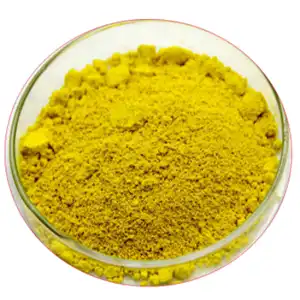
Berberine HCL Powder Supplier
For those seeking high-quality berberine hcl powder, Shaanxi Rebeccia stands out as a professional supplier in China. Our production base is equipped with internationally leading extraction, separation, and purification equipment, and operates in strict compliance with GMP and ISO standards. From raw material procurement to finished product delivery, every step undergoes rigorous quality control to ensure the safety and efficacy of our products. Our HCL powder specifications include a CAS No. of 633-65-8, molecular formula C20H18ClNO4, and active ingredients such as Berberine, phellodendrine, magnoflorine, jatrorrhizine, and palmatine. We offer a 97% specification, derived from bark, with a yellow crystalline powder appearance and an 80 Mesh size. For inquiries about our premium products, contact us at information@sxrebecca.com.
References
- Zhang, Y., et al. (2020). Comparative pharmacokinetics of berberine phytosome vs berberine hydrochloride in rats. International Journal of Pharmaceutics, 580, 119182.
- Li, Z., et al. (2019). Berberine: A potential novel approach for metabolic syndrome. Pharmacological Research, 146, 104321.
- Yin, J., et al. (2018). Berberine in the treatment of metabolic syndrome: From pharmacology to clinical practice. Therapeutic Advances in Endocrinology and Metabolism, 9(11), 345-356.
- Cicero, A. F., & Baggioni, A. (2016). Berberine and its role in chronic disease. Advances in Experimental Medicine and Biology, 928, 27-45.
- Pang, B., et al. (2015). Application of berberine on treating type 2 diabetes mellitus. International Journal of Endocrinology, 2015, 905749.
